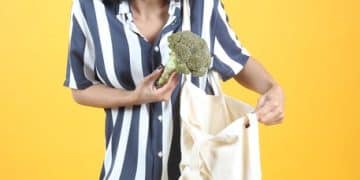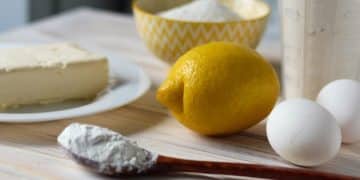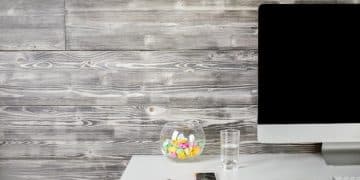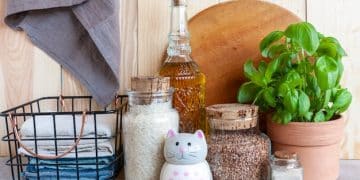Sustainable Spring Cleaning: 6 Eco-Friendly Swaps for 2025
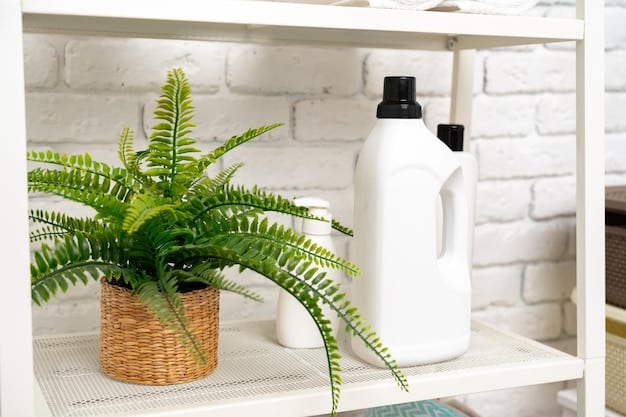
Sustainable spring cleaning involves making simple eco-friendly swaps like using reusable cloths, natural cleaning products, and upcycled containers to transform your home into a healthier, more environmentally conscious space before April 2025.
Ready to freshen up your home for spring while protecting the planet? Discover how to make your sustainable spring cleaning: transform your home with these 6 eco-friendly swaps before April 2025.
Why Embrace Sustainable Spring Cleaning?
Spring cleaning is a tradition for many households, but it often involves harsh chemicals and disposable products. However, there’s a growing movement towards more eco-conscious practices that not only clean your home but also protect the environment. Let’s explore the benefits and significance of making the switch.
Health Benefits
Traditional cleaning products can contain harmful chemicals that contribute to indoor air pollution, triggering allergies and respiratory issues. By opting for natural alternatives, you can create a healthier living environment for yourself and your family. This is especially important for young children, pets, and individuals with sensitivities.
Environmental Impact
Conventional cleaning supplies often end up polluting waterways and harming aquatic life. Plastic packaging contributes to landfill waste and ocean pollution. By choosing sustainable options, you reduce your environmental footprint and help preserve our planet’s resources for future generations.
- Reduced exposure to harmful chemicals
- Decreased landfill waste from disposable products
- Conservation of natural resources
- Support for eco-friendly businesses and practices
Switching to sustainable cleaning products and practices isn’t just a trend; it’s a commitment to a healthier and more environmentally responsible lifestyle. Every small change makes a difference in creating a cleaner home and a greener planet.
Swap 1: Ditch Paper Towels for Reusable Cloths
One of the easiest and most impactful swaps you can make is replacing disposable paper towels with reusable cloths. Not only will this save you money in the long run, but it will also significantly reduce your contribution to landfill waste. Let’s dive into the benefits and options available.
Variety of Reusable Cloths
There are numerous types of reusable cloths to choose from, each designed for different cleaning tasks. Microfiber cloths are excellent for dusting and polishing, cotton cloths are great for general cleaning, and bamboo cloths offer natural antibacterial properties. Experiment with different options to find what works best for you.
Proper Care and Maintenance
To ensure your reusable cloths last, proper care and maintenance are essential. Wash them regularly in hot water with a natural laundry detergent. Avoid using fabric softeners, as they can reduce the cloth’s absorbency. Dry them in the dryer or hang them to air dry. With proper care, reusable cloths can last for years.
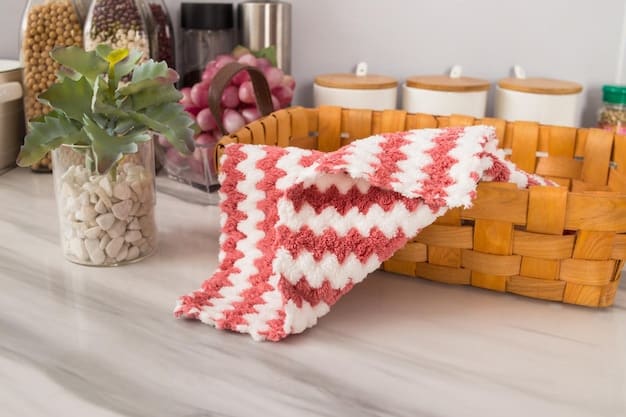
Switching to reusable cloths is a simple yet powerful way to reduce waste and promote sustainable cleaning practices. By making this one swap, you can significantly lessen your environmental impact and create a more eco-friendly home.
Swap 2: Embrace Natural Cleaning Products
Conventional cleaning products often contain harsh chemicals that can be harmful to your health and the environment. Thankfully, there are many natural and effective alternatives available. Let’s explore the benefits and some popular ingredients you can use.
The Power of Vinegar, Baking Soda, and Lemon
These three ingredients are staples of natural cleaning. Vinegar is a great disinfectant and deodorizer, baking soda is a mild abrasive that can remove stains and grime, and lemon juice contains citric acid, which is a natural bleaching agent and degreaser. Together, they can tackle most cleaning tasks.
DIY Cleaning Recipes
Making your own cleaning solutions is surprisingly easy and cost-effective. A simple all-purpose cleaner can be made by mixing equal parts vinegar and water in a spray bottle. For tougher stains, create a paste of baking soda and water. Experiment with different recipes to find what works best for your needs.
- Mix equal parts vinegar and water for an all-purpose cleaner.
- Create a baking soda paste for scrubbing stubborn stains.
- Use lemon juice to brighten surfaces and cut through grease.
- Add essential oils for a pleasant scent and added cleaning power.
Embracing natural cleaning products is a win-win for your health and the environment. By making the switch, you can enjoy a cleaner home without exposing yourself to harmful chemicals or contributing to pollution.
Swap 3: Refillable and Concentrated Cleaners
Packaging waste is a significant concern in the cleaning industry. Refillable and concentrated cleaners offer a sustainable solution by reducing the amount of plastic that ends up in landfills. Let’s explore the benefits and options available.
How Refillable Systems Work
Refillable cleaning systems typically involve purchasing a reusable bottle once and then buying concentrated refills that you mix with water. This significantly reduces the amount of plastic waste generated compared to buying new bottles each time. Some companies even offer mail-back programs for the empty concentrate pouches.
Benefits of Concentrated Formulas
Concentrated cleaning formulas not only reduce plastic waste but also save on shipping costs and carbon emissions. Because they are more compact, they require less packaging and transportation, making them a more eco-friendly choice overall. Plus, they often last longer than traditional cleaning products.
Choosing refillable and concentrated cleaners is a practical and effective way to reduce your environmental impact. By making this simple swap, you can minimize waste and support companies committed to sustainable practices.
Swap 4: Upcycled Containers for Storage
Instead of buying new storage containers, get creative and upcycle items you already have around the house. This reduces waste and gives a unique, personal touch to your cleaning routine. Let’s look at some practical ideas and tips for upcycling.
Creative Upcycling Ideas
Old glass jars can be repurposed for storing cleaning solutions or homemade laundry detergent. Plastic bottles can be cut down to create caddies for holding cloths and sponges. Even old t-shirts can be cut and sewn into reusable cleaning cloths.
Benefits of Upcycling
Upcycling not only reduces waste but also saves you money. It encourages creativity and resourcefulness, turning everyday items into useful cleaning tools. Plus, it’s a great way to personalize your cleaning routine and add a unique touch to your home.
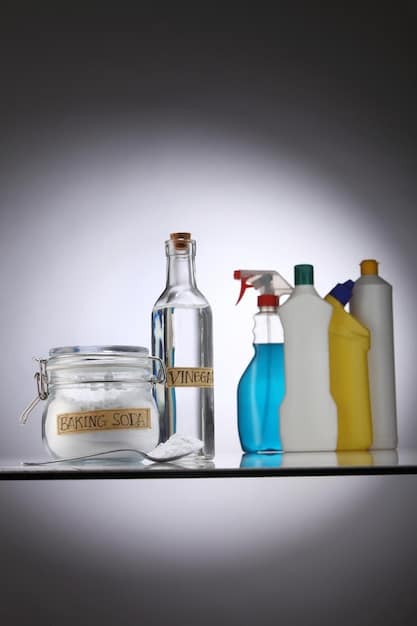
Upcycling containers for storage is a fun and eco-friendly way to reduce waste and organize your cleaning supplies. By getting creative and repurposing items you already have, you can create a more sustainable and personalized cleaning routine.
Swap 5: Eco-Friendly Cleaning Tools
Beyond the cleaning products themselves, the tools you use can also have a significant environmental impact. Opting for eco-friendly alternatives made from sustainable materials can make a big difference. Let’s explore some options.
Sustainable Materials to Look For
Look for cleaning tools made from bamboo, wood, recycled plastic, or natural fibers. Bamboo is a renewable resource that grows quickly without the need for pesticides. Wood is biodegradable and can be sourced from sustainably managed forests. Recycled plastic helps reduce landfill waste, and natural fibers like cotton and hemp are biodegradable and compostable.
Examples of Eco-Friendly Tools
Bamboo-handled brushes are a great alternative to plastic brushes. Natural sponges made from sea sponges or plant-based materials are biodegradable. Even your mop can be swapped for one with a reusable and washable head made from cotton or microfiber.
- Bamboo-handled brushes
- Natural sea sponges
- Mops with reusable cotton or microfiber heads
- Recycled plastic buckets and spray bottles
Choosing eco-friendly cleaning tools is a smart way to reduce your environmental impact and promote sustainable practices. By considering the materials and manufacturing processes, you can make informed choices that benefit both your home and the planet.
Swap 6: Composting for a Greener Clean
Did you know that composting can play a role in your spring cleaning routine? Food scraps and yard waste can be turned into nutrient-rich compost, which can then be used to enrich your garden soil. Let’s explore the benefits and how to get started.
Benefits of Composting
Composting reduces landfill waste, enriches soil, and reduces the need for chemical fertilizers. It’s a natural and sustainable way to dispose of organic waste and create a valuable resource for your garden. Plus, it helps sequester carbon in the soil, which can mitigate climate change.
Getting Started with Composting
You can start composting by setting up a compost bin in your backyard or using a countertop composter for indoor use. Add food scraps like fruit and vegetable peels, coffee grounds, and tea bags, as well as yard waste like leaves and grass clippings. Avoid adding meat, dairy, and oily foods, as they can attract pests and create unpleasant odors.
Composting is a simple yet powerful way to reduce waste and create a valuable resource for your garden. By incorporating composting into your spring cleaning routine, you can contribute to a more sustainable and environmentally friendly lifestyle.
| Key Point | Brief Description |
|---|---|
| 🌿 Reusable Cloths | Replace paper towels with washable, reusable cloths to reduce waste. |
| 🍋 Natural Cleaners | Use vinegar, baking soda, and lemon for effective, non-toxic cleaning. |
| ♻️ Upcycled Storage | Repurpose old jars and containers to store cleaning supplies. |
| 🌱 Eco Tools | Opt for bamboo brushes and natural sponges over plastic alternatives. |
FAQ
▼
Sustainable spring cleaning reduces exposure to harmful chemicals, minimizes waste, conserves resources, and supports a healthier environment for you and your family.
▼
Combine equal parts white vinegar and water for an all-purpose cleaner, or mix baking soda with water to form a paste for tackling tough stains around the house.
▼
Microfiber cloths, cotton towels, and even old t-shirts cut into rags make great reusable alternatives to paper towels for various cleaning tasks.
▼
Opt for refillable cleaning systems, concentrated formulas, and upcycle old containers for storage to reduce the amount of plastic waste you generate.
▼
Look for cleaning tools made from sustainable materials like bamboo, wood, recycled plastic, or natural fibers to reduce your environmental impact.
Conclusion
Embracing sustainable spring cleaning is a simple yet effective way to make a positive impact on both your home and the environment. By incorporating these six eco-friendly swaps into your routine before April 2025, you can create a cleaner, healthier living space while reducing your carbon footprint and supporting a more sustainable future.
